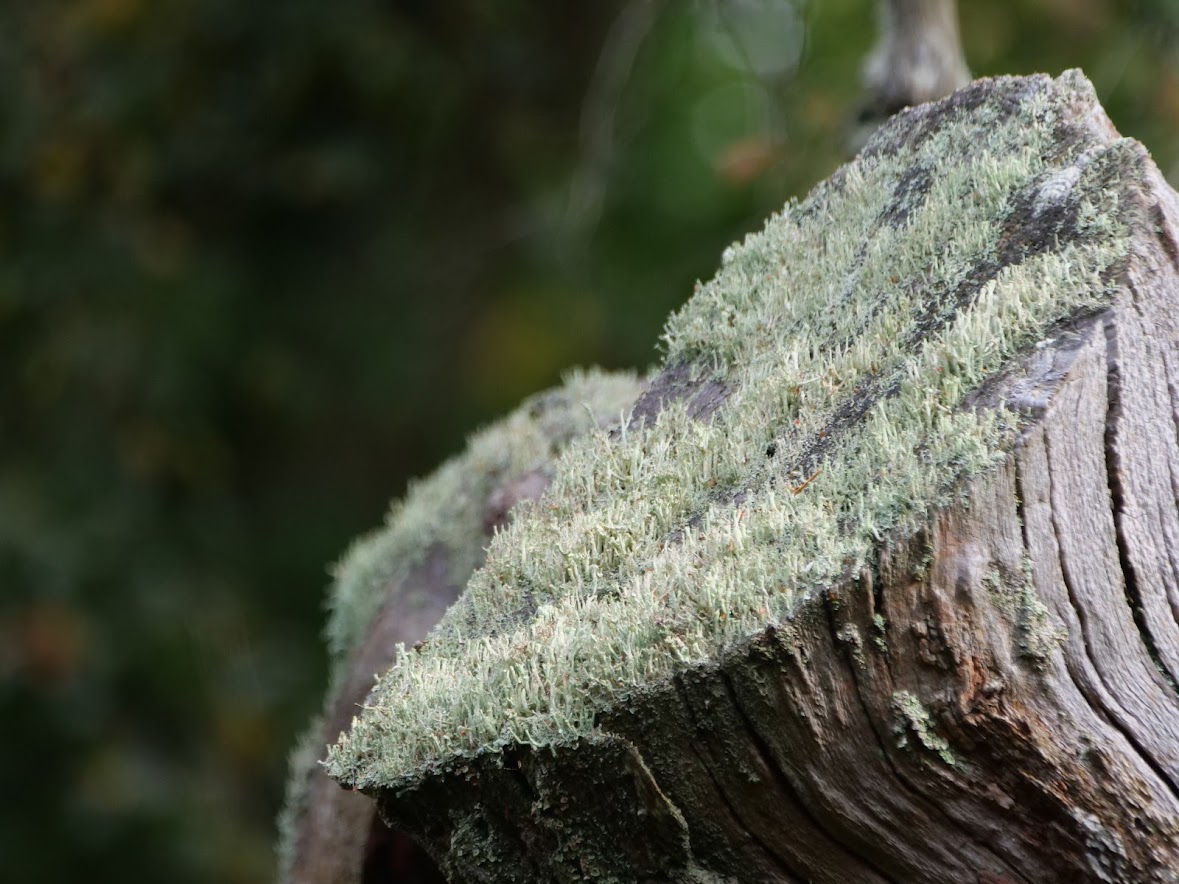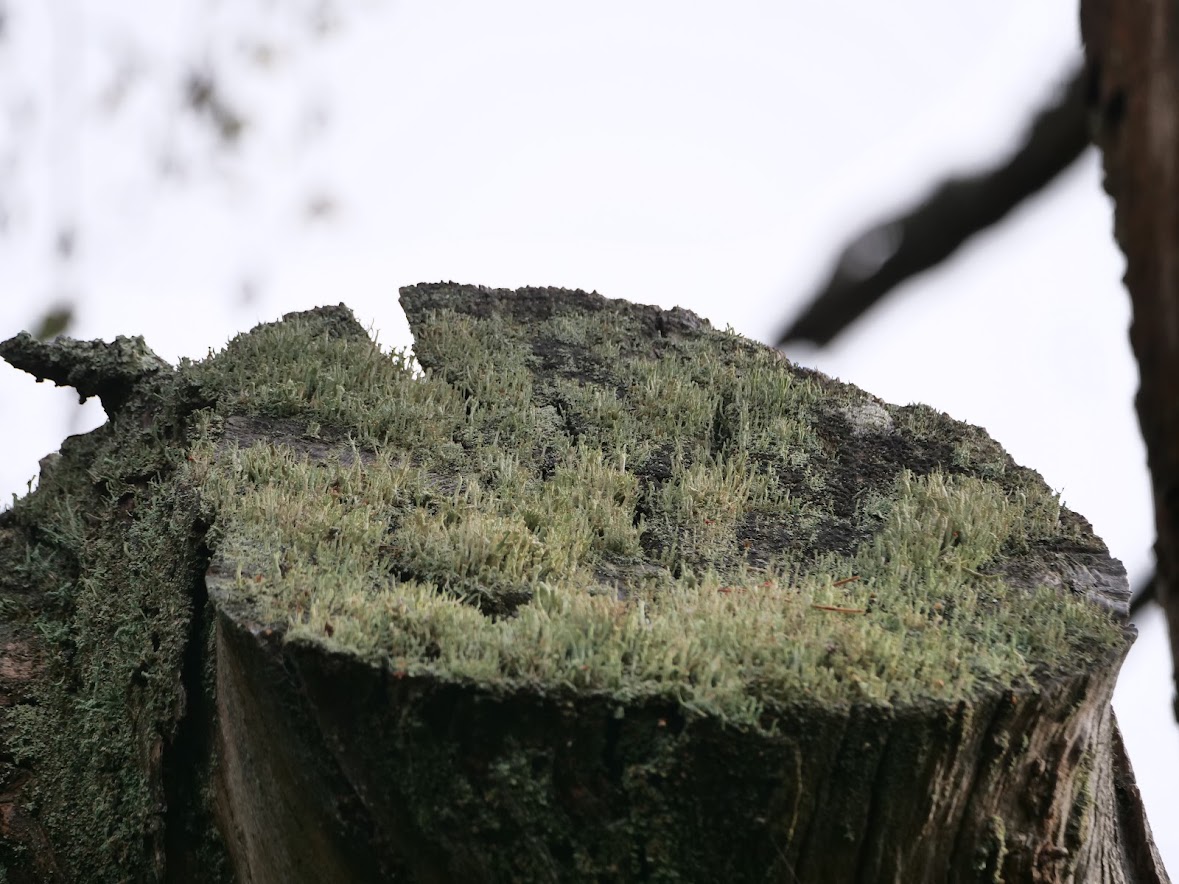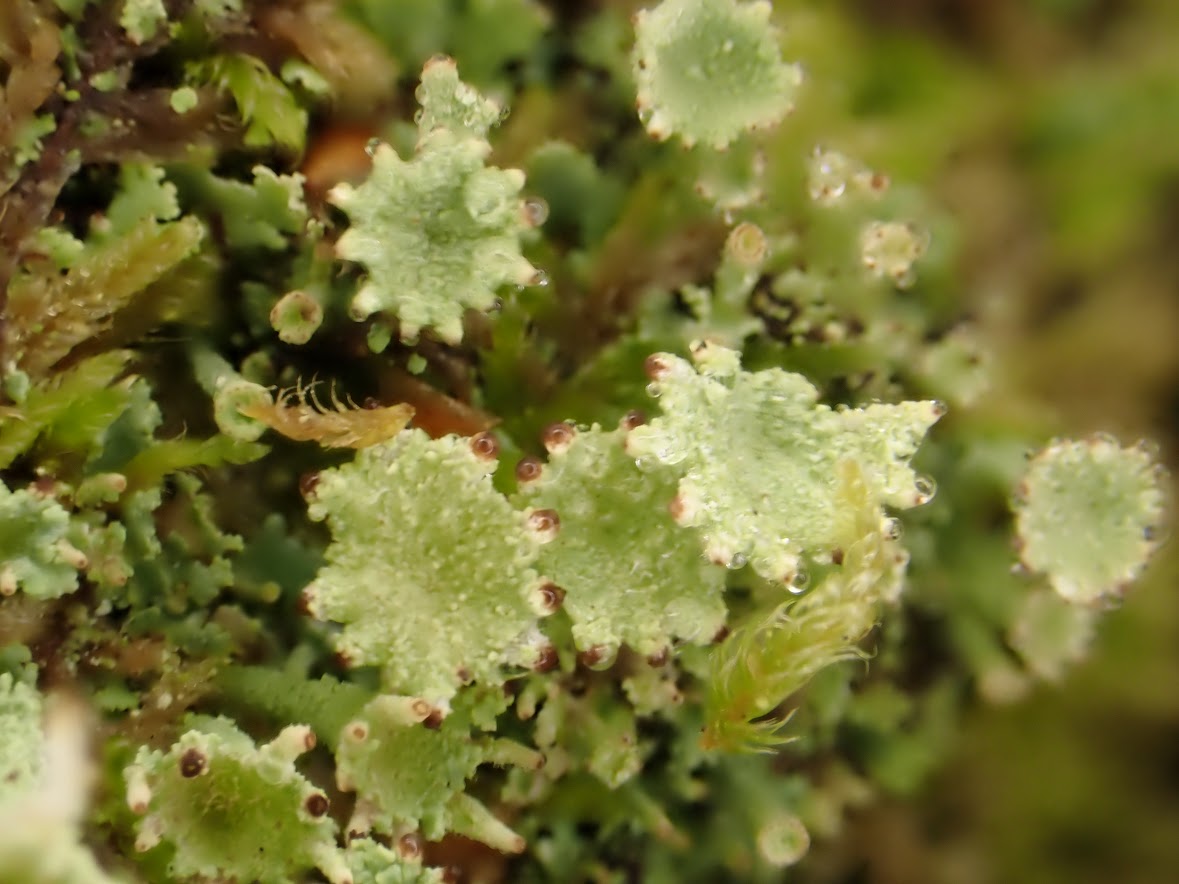Cladonia is a genus of moss-like lichens in the family Cladoniaceae. ... two main morphological groups are commonly differentiated by taxonomists: the Cladonia morpho-type and the Cladina morpho-type. The Cladonia morpho-type has many more species, and is generally described as a group of squamulose (grow from squamules), cup-bearing lichens. The Cladina morpho-types are often referred to as forage lichens, mat-forming lichens, or reindeer lichens (due to their importance as caribou winter forage). Cladonia - Wikipedia
Cladonia lichens are notoriously difficult to identify, so all these identifications are provisional; with one of these Cladonia I saw, probably Cladonia chlorophaea, I consulted an expert on Cladonia: Brian Eversham, CEO of Wildlife Trust for Bedfordshire, Cambridgeshire & Northamptonshire via Twitter/X @BrianE_Cambs
There is a very useful free guide to Cladonia with keys from the Joint Nature Conservation Committee that can be accessed here Cladonia: a field guide (jncc.gov.uk). The most recent revision (2019) of the Cladonia volume of the British Lichen Society's British and Irish Lichens (the standard flora of British and Irish Lichens) can be accessed here Cladoniaceae rev01.pdf (britishlichensociety.org.uk). These are the resources that I use for Cladonia identification, along with Dobson (2018) Lichens. An illustrated guide to the British and Irish species 7th ed see: Dobson - new edition now available | The British Lichen Society. Many lichen do not have commonly used vernacular names; the English names I use are those used by iNaturalist; but these are not always the vernacular names used in England.
Accurately to identify some Cladonia, chemical testing and microscopy is required; with one of the Cladonia I saw, probably C. chlorophaea, I tested it with chemical reagents at home with a small sample collected in the field. For the ethics and law regarding specimen collecting see: Collecting Specimens | The British Lichen Society.
But you don't need to be able to identify lichen to enjoy them; I get great pleasure from observing the beauty of things, even when I can't identify what species they are.
Fungi and lichen are related. A lichen is not a single organism; it is a stable symbiotic association between a fungus and algae and/or cyanobacteria. Like all fungi, lichen fungi require carbon as a food source; this is provided by their symbiotic algae and/or cyanobacteria, that are photosynthetic. The lichen symbiosis is thought to be a mutualism, since both the fungi and the photosynthetic partners, called photobionts, benefit. What is a Lichen? | The British Lichen Society
Broadwater Warren is an RSPB nature reserve area of lowland heath with many cut tree stumps, and some ancient stools of coppiced Chestnut. Lowland heath, cut tree stumps and coppiced Chestnut stools are very propitious substrates for some Cladonia species.
Set in the High Weald Area of Outstanding Natural Beauty near to Royal Tunbridge Wells, there have been some big changes at Broadwater Warren. Heathland and woodland restoration is returning Broadwater to its historic habitat of centuries ago. This reserve is returning to a wildlife-rich mosaic of heathland and native woodland with scrubby woodland margins, scattered stands of pines and rare woodland mire. Broadwater Warren | The RSPB
Broadwater Farms is known for its rich diversity of fruiting fungi in Autumn , see: Fungal fun with boletes at Broadwater - Broadwater Warren - Broadwater Warren - The RSPB Community
These Cladonia were growing high up in the sawn trunk of a dead tree (probably Beech) in Eridge Rocks, on the way to Broadwater Warren; they were two high up to identify, but were a magnificent sight.

 Probably Lipstick Powderhorn, Cladonia macilenta
Probably Lipstick Powderhorn, Cladonia macilenta  Probably Branched Pixie-cup Lichen, Cladonia ramulosa
Probably Branched Pixie-cup Lichen, Cladonia ramulosa  Probably Trumpet Lichen, Cladonia fimbriata
Probably Trumpet Lichen, Cladonia fimbriata  Possibly Finger Cup Lichen, Cladonia digitata
Possibly Finger Cup Lichen, Cladonia digitata  Probably Branched Pixie-cup Lichen, Cladonia ramulosa
Probably Branched Pixie-cup Lichen, Cladonia ramulosa  Probably Mealy Pixie Cup, Cladonia chlorophaea s. stict.. Growing on sand behind the seat at the heathland viewing point
Probably Mealy Pixie Cup, Cladonia chlorophaea s. stict.. Growing on sand behind the seat at the heathland viewing point 


Next to the above were probably Common Powderhorn, Cladonia coniocraea. I see C. coniocraea frequently in the low and high weald; it frequently grows of the stumps of felled trees and the stoolsof coppiced tress.
 Probably Trumpet Lichen, Cladonia fimbriata, on stool of coppiced Chestnut, Castanea sativa, with mosses
Probably Trumpet Lichen, Cladonia fimbriata, on stool of coppiced Chestnut, Castanea sativa, with mosses 